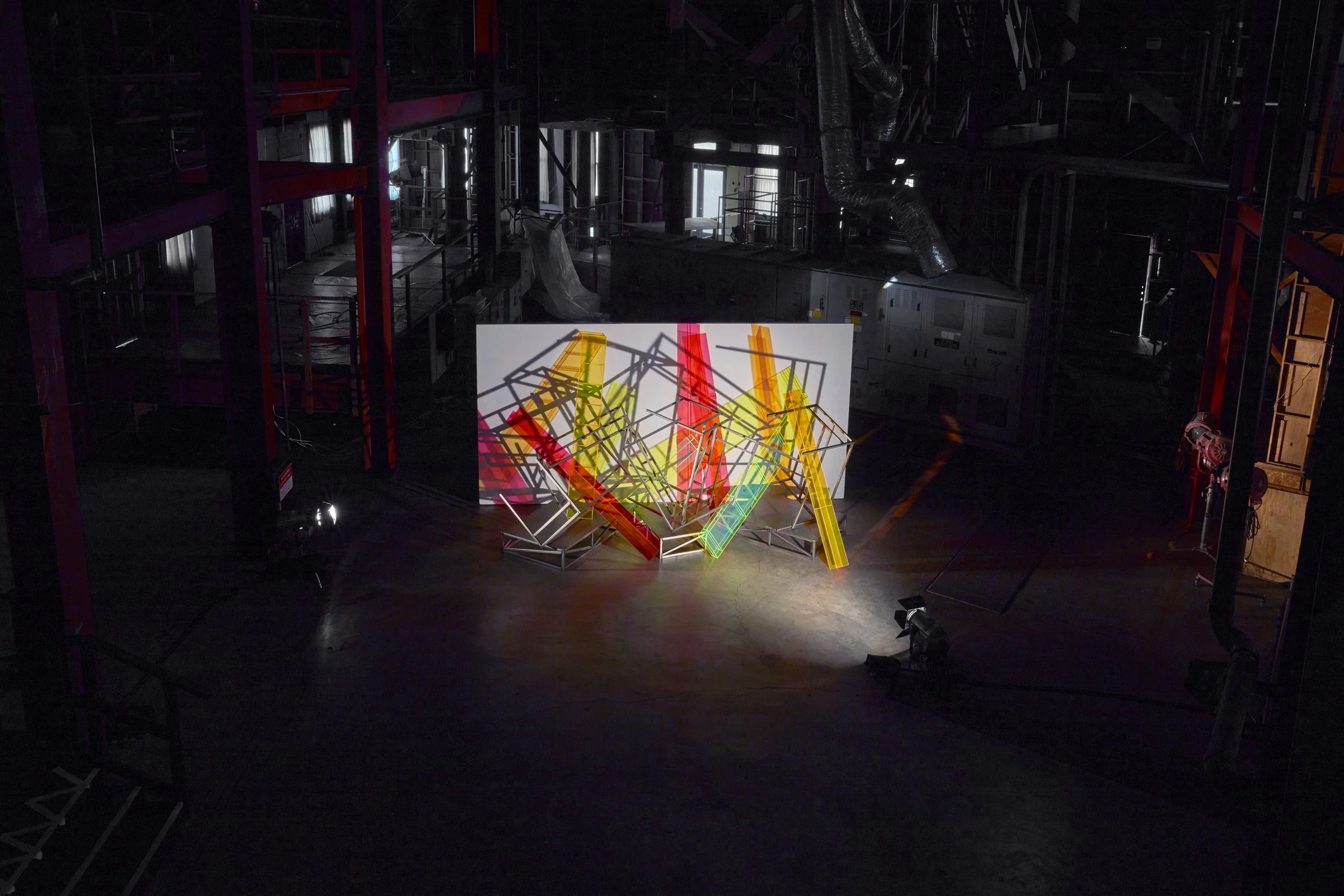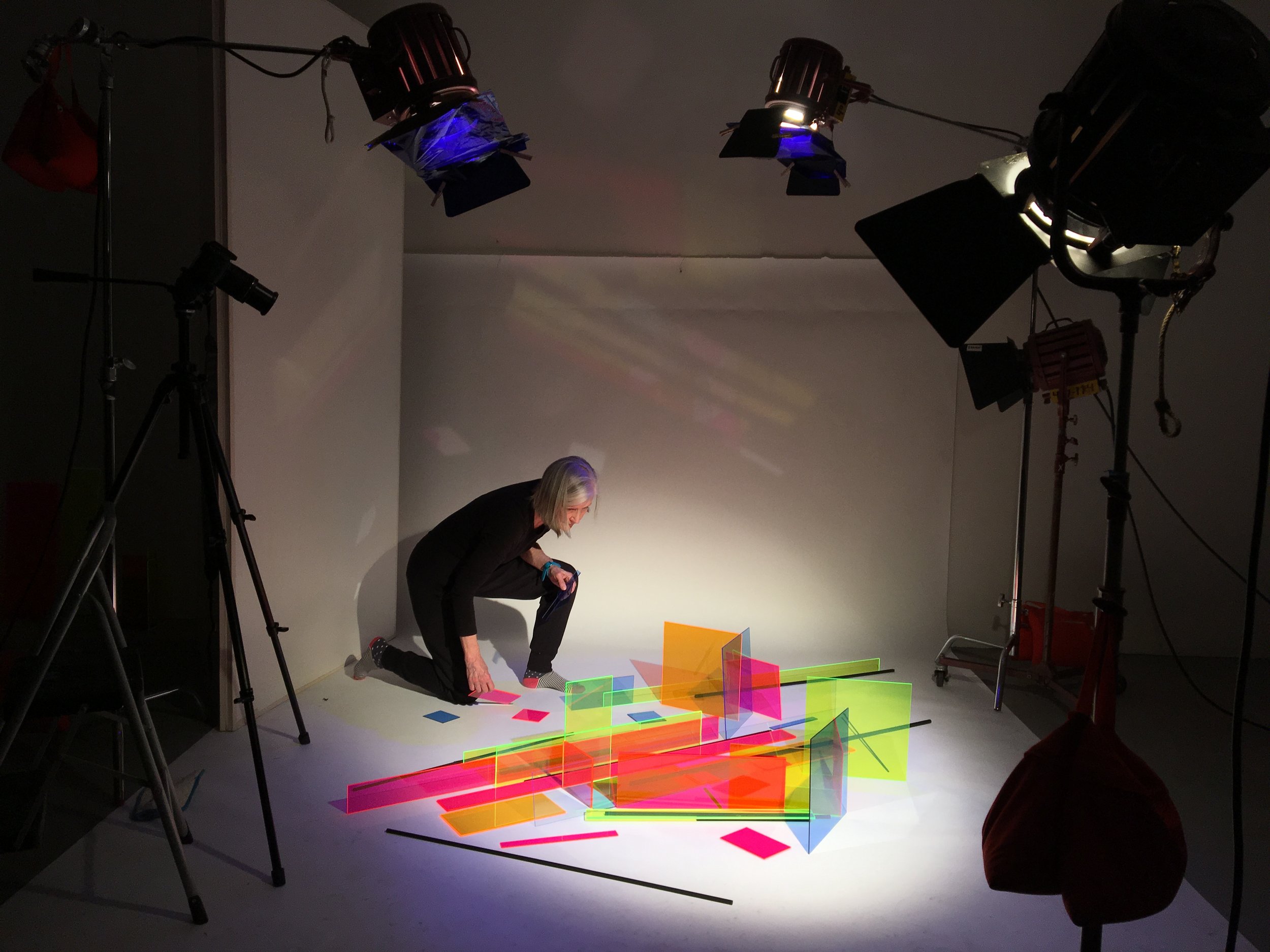Barbara Kasten | Architecture & Film (2015-2020)
Barbara Kasten, Intervention (2020). Installation view, Paramount Studios, Frieze, Los Angeles, CA. Courtesy of the artist and Hannah Hoffman, Los Angeles, CA
Written and Photo Edited by Wenjie (Demi) Zhao
In the art of Barbara Kasten, light is a protagonist, a powerful source eternally frozen in the frame of her photographs. It is through this ceaseless experimentation with light in space that Kasten manipulates the concepts of architecture and film, embodying an ethereal and intellectual interplay of art forms in her creations from 2015 to 2020.
As elucidated by Stephanie Cristello in her book Barbara Kasten: Architecture & Film (2015-2020), Kasten’s exploration of light and its relation to space transcends traditional artistic norms. Her work defies conventional classifications, hovering in the interstices between photography, sculpture, performance, and architecture. The intersection of these various art forms has enabled Kasten to break away from the rigid hierarchy of artist and viewer, inviting the audience to engage actively with her work.
Analogous to the use of light in her work is Kasten’s engagement with architecture. Her work incorporates buildings by renowned architects like Mies van der Rohe and Shigeru Ban, seamlessly integrating their designs into her work. Yet, in a radical, defiant act, she deconstructs these architectural masterpieces, literally unbuilding the buildings, and in so doing, extends an invitation to reimagine and reinterpret these structures.
This novel approach to architecture is most notably embodied in Kasten’s work with Crown Hall at the Illinois Institute of Technology (IIT), where her images exist in the delicate balance between photography and sculpture. Utilizing the hall’s ambient lighting, Kasten transforms the building into a canvas, recording the play of light and shadow on its surfaces. This convergence of light and architecture results in an experimental abstraction that engenders sensory and cognitive reform.
Barbara Kasten, installation view at S.R. Crown Hall, Chicago, IL, 2018. Image courtesy of the artist and Bortolami, New York.
Barbara Kasten, Installation view, Scenarios, Aspen Art Museum, Aspen, CO. Photo: Carter Seddon.
The cinematic element of Kasten’s work manifests through the orchestration of her shoots. Resembling the intricacies of a film set, she conducts her shoots with a director’s precision, enhancing the depth and theatricality of her installations. Like an architect surrendering control over the realization of their design, Kasten embraces the chaos, the uncertainty, and the artistic spontaneity that emerges in this process.
Kasten’s visit to Le Corbusier’s Ronchamp Chapel in 1965 encapsulates her approach to art and architecture for over fifty years. She describes how the interior and atmospheric experience of the building inspired her, drawing attention to the way light and color create a unique ambience. Her perception of the space influenced her later photographic work, underlining the importance of perspective in understanding art and architecture.
Her photographs and installations serve as a testament to the symbiosis of these art forms, where each installation morphs into an architectural construction and each photograph serves as a testament to her personal viewpoint. “I was building, moving, and arranging these installations — yet from there, I would step out of the space and behind the camera. The photographs became a hybrid of my eye,” Kasten reflects.
Barbara Kasten, Installation view, Scenarios, Aspen Art Museum, Aspen, CO. Photo: Carter Seddon.
In all her works, from the blue meditations of the 1990s to the chromatic installations and films since 2015, the consistent thread remains her phenomenological approach to abstraction. Kasten’s exploration of light, space, and architecture is intrinsically interwoven, leading to a unique visual language that encapsulates the tangible and intangible elements of human experience. She captures how light travels through architecture, how it reflects, refracts, and sculpts spaces, and consequently our perception of them. In the end, her work emerges as an ode to the sensory journey that light takes through architecture and film, illuminating the ways in which art can redefine our relationship with the world.











